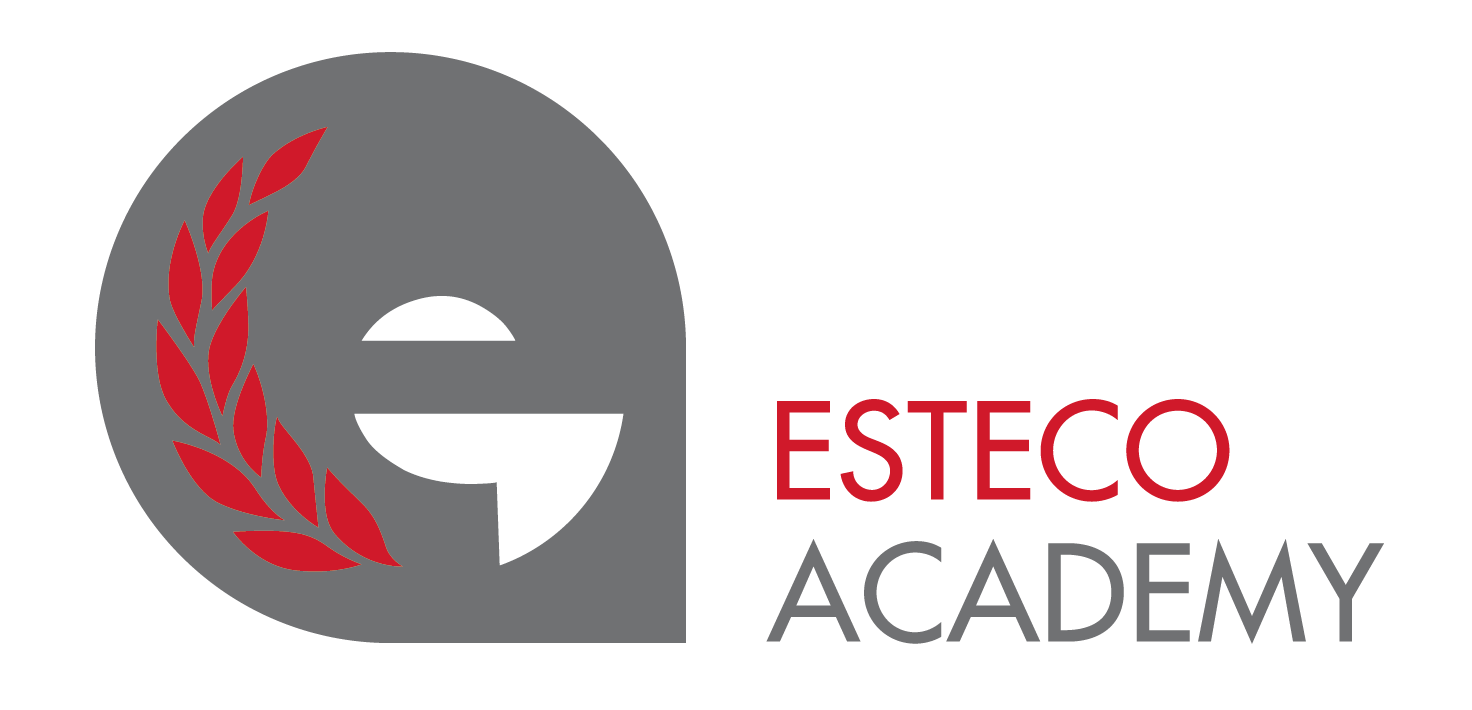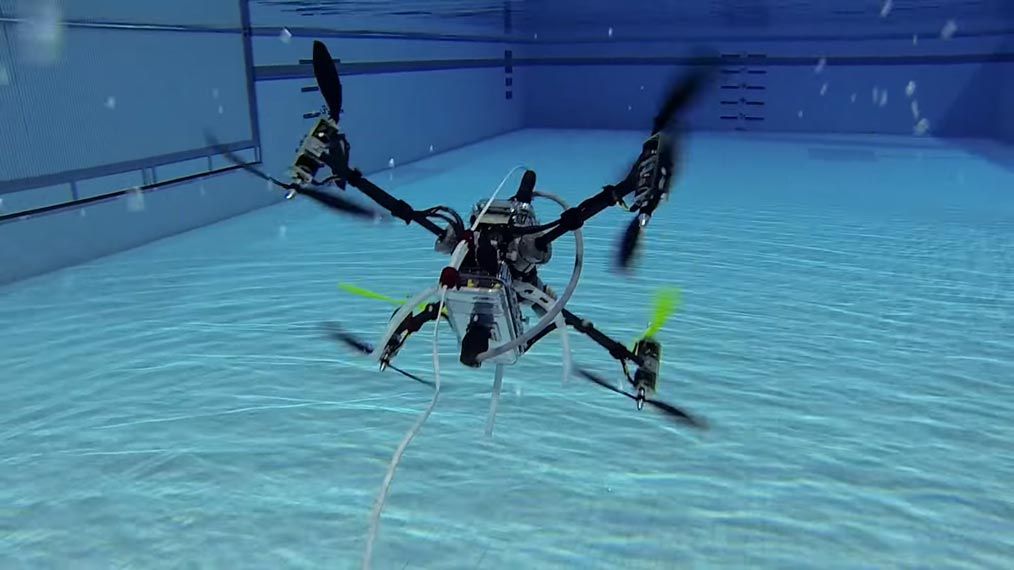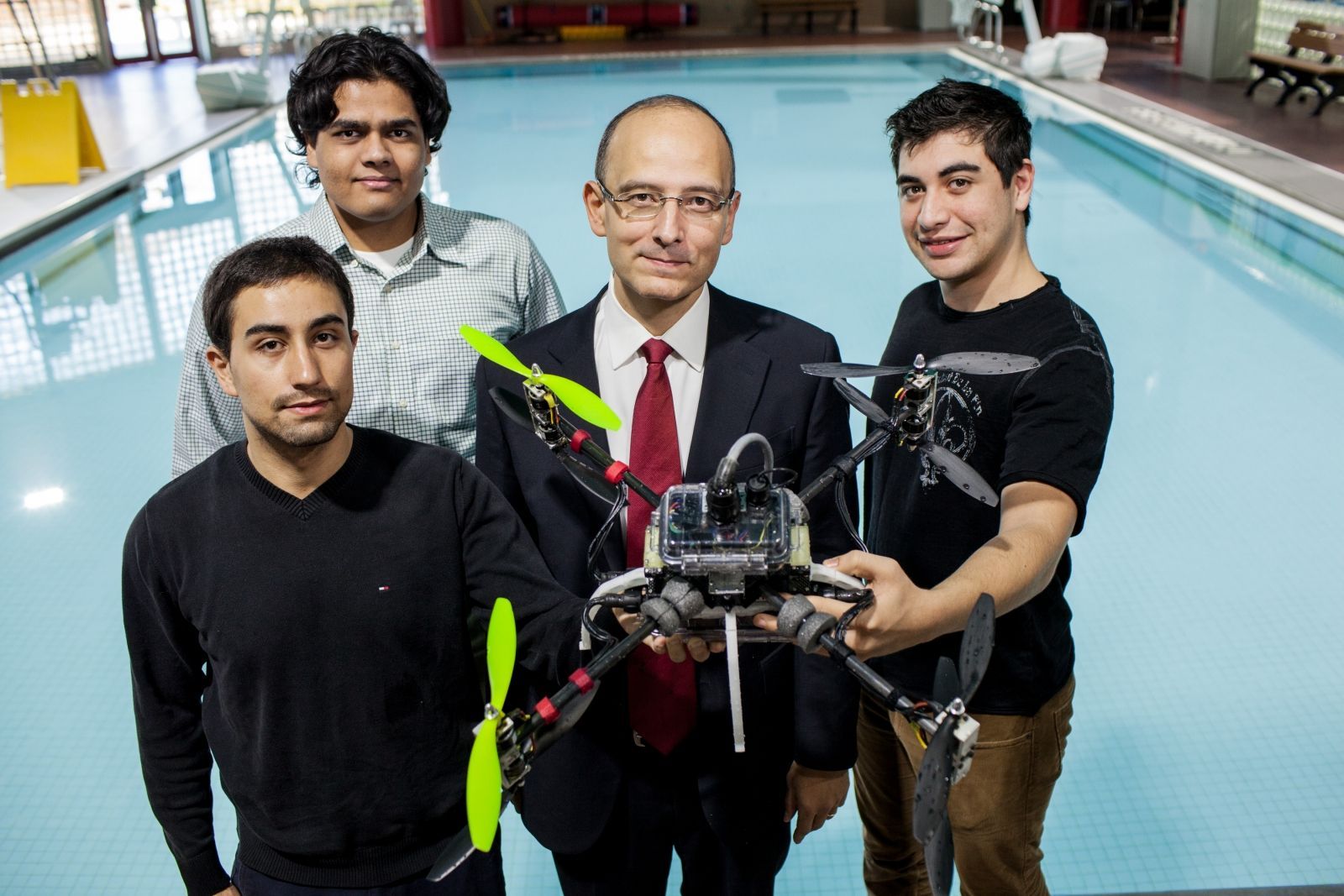The Naviator. One of the best optimization projects at Rutgers, the State University of New Jersey


- Institution: Naviator team at Rutgers University
- ESTECO Software Solution: modeFRONTIER
-
Benefits:Easily integrate several software together, such as MATLAB, Solidworks or ANSYS FluentDetermine the optimal geometry for these volumetric additions using several optimization algorithms
The Naviator, optimized using modeFRONTIER, was the first project to demonstrate an unmanned aerial and submersible vehicle that could operate both in air and underwater.
At Rutgers, researchers in the Department of Mechanical and Aerospace Engineering’s Laboratory for Experimental Fluids and Thermal Engineering, under the direction of prof. Diez, invented a remotely controlled drone similar to those used by hobbyists and professionals globally, but with one key difference – it is able to both fly and move underwater. The drone called Naviator, and funded in part by the Office of Naval Research, could speed search-and-rescue operations, monitor the spread of oil spills and even help the Navy rapidly defuse threats from underwater mines. Marco Maia, PhD candidate in Mechanical and Aerospace Engineering (MAE) working under Prof. F. J. Diez in the Rutgers Applied Fluids Lab and student in the Optimal Design course with Prof. Knight, worked at this outstanding project using modeFRONTIER.
"With modeFRONTIER I was able to easily integrate several software together, such as MATLAB and ANSYS Fluent."
Most of our research thrusts involve fluids such as in electrokinetics, microfluidics & nanofluidics, wind energy, turbulence, laser diagnostics with PIV, biological flows. We pride ourselves on the applied nature of some of our research topics, such as in the development of electrokinetic thrusters, AUVs & seagliders and unmanned aerial systems. This vehicle gained a great deal of attention and Prof. Diez was able to secure a grant from the Office of Naval Research (ONR) in the amount of ~$600k. Since then, this research project has grown and has been showcased in several news outlets. Recently, National Geographic visited Rutgers University to film our latest multi-medium vehicle in action for use in one of their pieces, which we were told would be unveiled later in the summer. The optimization project in the MAE Optimal Design course with Prof. Doyle Knight was a great opportunity to make the planned improvements to our new multi-medium vehicle platform. We cannot provide too many details on the vehicle itself until its unveiling, but when we designed the new platform we purposely made it into a skeleton that could benefit from aerodynamic volumetric additions. Thanks to ESTECO for kindly making available its technology for the students of this course. With modeFRONTIER I was able to easily integrate several software together, such as MATLAB, Solidworks or ANSYS Fluent and run the necessary simulations to determine the optimal geometry for these volumetric additions using several optimization algorithms. The result was an optimal set of solutions that minimized the drag and weight while maintaining near neutral buoyancy. The autonomy and visual aids of the software were truly remarkable-it definitely streamlines the optimization process. Thank you again for allowing us to use this very useful tool”.


The Naviator Team has been working at the Center for Computational Design within Rutgers Department of Mechanical and Aerospace Engineering’s Applied Fluid Labs, under the direction of the Prof. F. Javier Diez. Rutgers, The State University of New Jersey, is a leading national research university and the state of New Jersey’s preeminent, comprehensive public institution of higher education. Established in 1766 and celebrating a milestone 250th anniversary in 2016, the university is the eighth oldest higher education institution in the United States. More than 67,000 students and 22,000 faculty and staff learn, work, and serve the public at Rutgers locations across New Jersey and around the world. www.rutgers.edu


